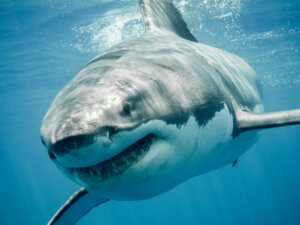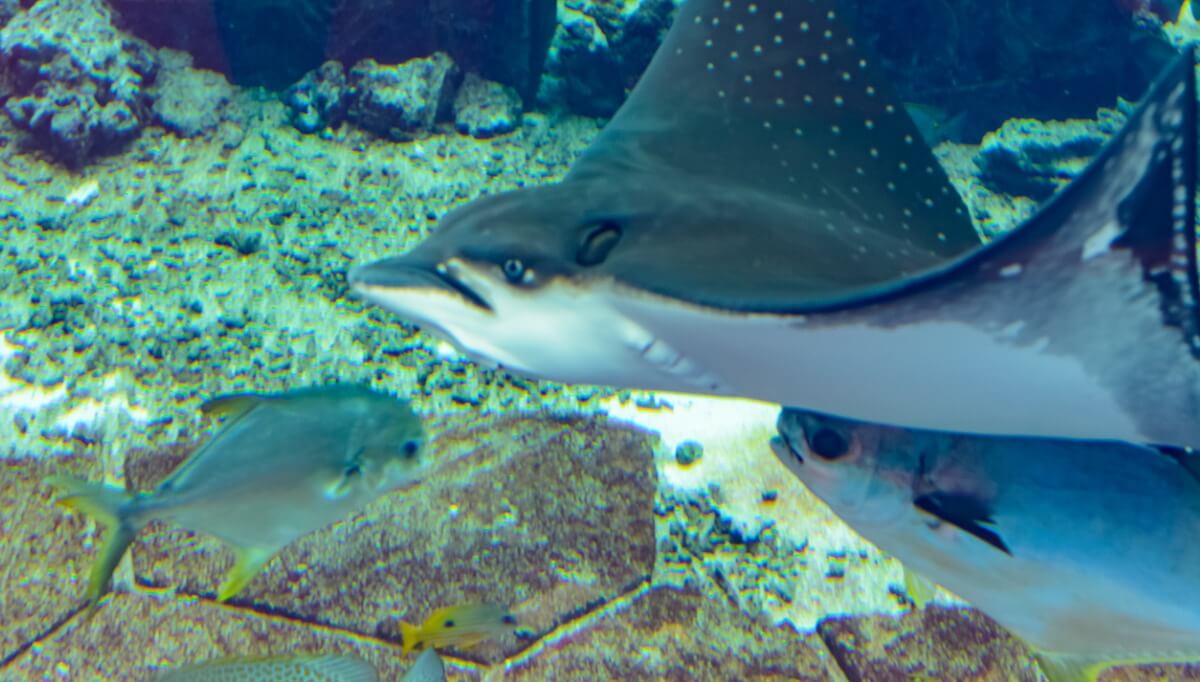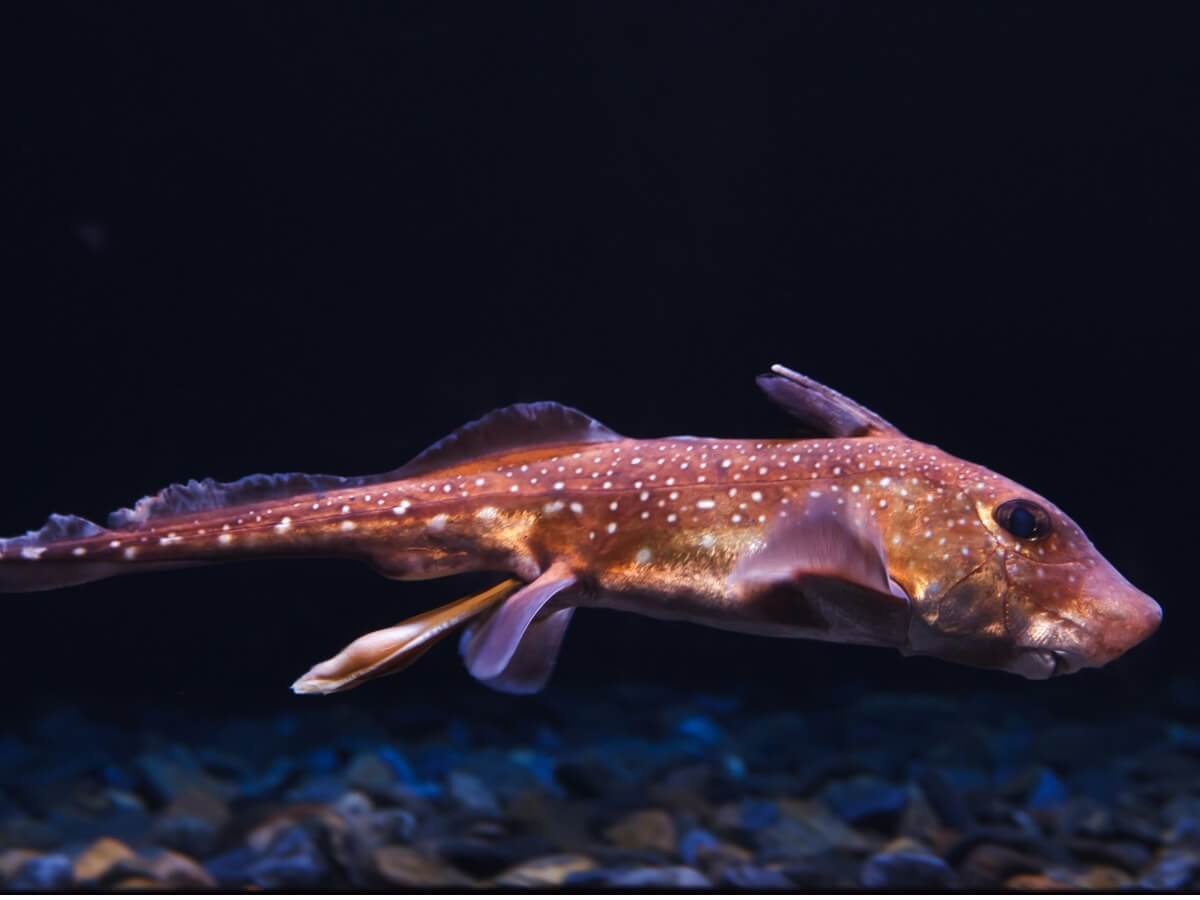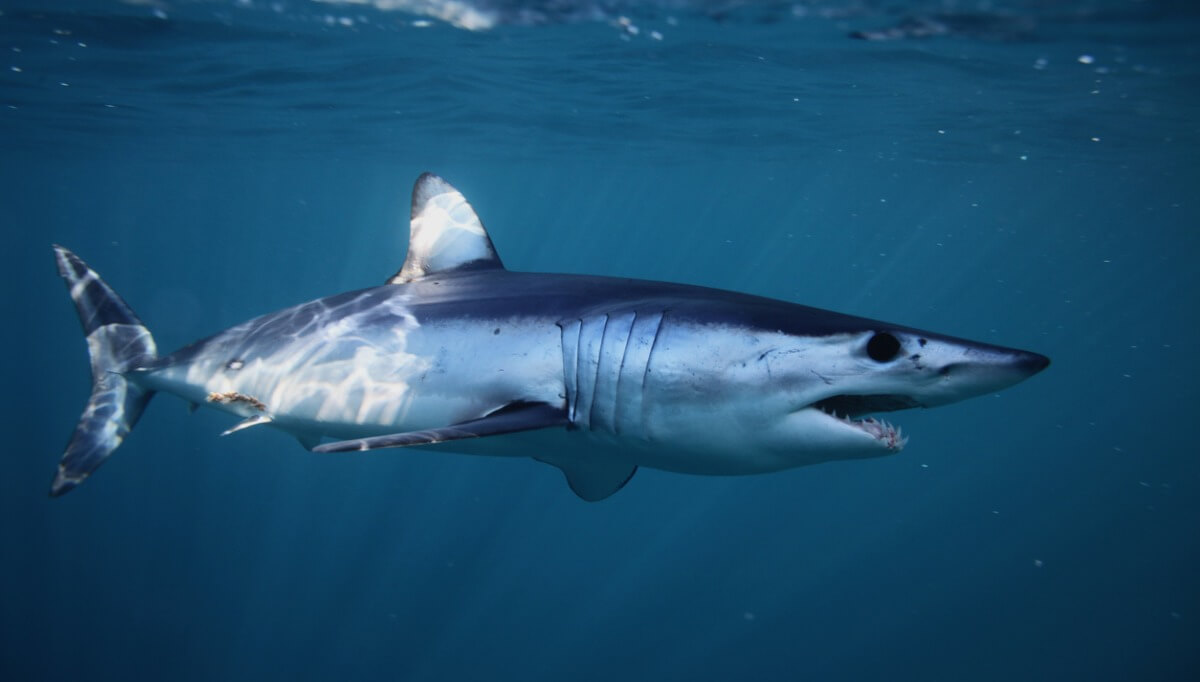Cartilaginous Fish: Habitat, Types and Characteristics


Written and verified by the biologist Cesar Paul Gonzalez Gonzalez
Belonging to the class Chondrichthyes, cartilaginous fish are animals that have cartilage skeletons. This class includes sharks, rays, and chimeras. These taxa have an ancient evolutionary history, since they appeared more than 450 million years ago.
Chondrichthyes are, for the most part, predators. Due to this, they have an important ecological role, by controlling the populations of their prey. Its meat provides a large amount of protein, fat, and vitamin A, which is why they are used for human consumption. If you want to know more about these species, keep reading – you’ll surely be amazed.
Types and characteristics of cartilaginous fish
Cartilaginous fish, also called chondrichthyans, are characterized by having a cartilage skeleton. In addition, their skin is covered by placoid scales, which closely resemble a vertebrate tooth. That’s why these organisms have a rough texture to the touch.
Their mouths contain numerous partially calcified teeth. These aren’t fused to the jaw, so they also have several spare parts. These fish have 2 nostrils, a blowhole, and 5 to 7 gill openings. Their eyes don’t have eyelids like human eyelids, but they have a light, transparent membrane, called nictitate, which fulfills the same function.
Another main characteristic is the presence of pelvic fins in the lower part of their body, which serves as reproductive organs for these fish. These fins, also called claspers, are modified to be able to deposit the gametes (sperm) inside the female. That’s why only the males have them, but it’s a characteristic of the whole group.
According to the UNAM Institute of Biology, the group of chondrichthyans contains about 900 species. This taxon is divided into 2 subclasses: elasmobranchs (sharks and rays) and hoplocephals (chimeras). We’ll tell you all about their peculiarities.

Hoplocephali (chimeras)
These fish are common inhabitants of the deep waters at the bottom of the oceans. In addition, they have a jaw attached to the skull and their teeth are divided into 3 pairs of dental plates, which grow slowly and continuously without changing. The first fossil representative of this group is Callorhinchus, from Germany, dating from the Middle Jurassic.

Elasmobranchs (sharks and rays)
Members of this subclass have torpedo-shaped (fusiform) bodies, flattened on the sides. Although they do have eyes, their sight is not very good, so they rely on their smell to detect their prey. The olfactory bulbs, the areas of the brain that are responsible for processing information from smells, are highly developed.
Elasmobranchs also have a sense of electrosensitivity, with which they can detect variations in low-frequency electrical stimuli. They achieve this by means of Lorenzini’s ampoules, which they use for orientation in electric fields and to detect bioelectric fields from their prey.
The jaws of this group are mobile, since they’re suspended by a cartilage that joins them to the skull. This allows the lower jaw to project outward, allowing it to catch its prey.

How do cartilaginous fish swim?
Cartilaginous fish need constant swimming for the water to pass through the gill slits and for them to breathe. For this reason, they’ve developed different swimming mechanisms: wave propulsion and appendage propulsion.
The first mechanism refers to the use of its tail, with oscillating movements, which allow the fish to move forward. It’s used by most sharks, because their pectoral fins only allow them to maintain stability, but they don’t have flexibility.
In other words, they use their tail by flicking it from side to side to move forward, while their other fins keep it stable and straight.
Meanwhile, the second mechanism involves the use of pectoral fins or lateral appendages. This locomotive adaptation is used by stingrays, which raise and lower their appendages to be able to propel themselves in the water, something similar to “flying”, but under the water.
All species have one or both swimming mechanisms. This will depend on the body structure of each of the cartilaginous fish, as the shape of the body affects their locomotion and buoyancy.
These fish are optimized for swimming, as their modifications give them a great hydrodynamic capacity. The fact that they have a light cartilage skeleton improves buoyancy and the use of the scales reduces the turbulence of the water. In addition, these species don’t have a swim bladder, so their liver fulfills this function,
The high amount of liver lipids allows cartilaginous fish to float.
Reproduction of cartilaginous fish
Chondrichthyans have an internal fertilization process, but they’re capable of presenting all 3 types of reproduction: viviparous, oviparous and ovoviviparous. We’ll tell you about each of these strategies below.
Ovoviviparous
This type of reproduction is at an intermediate point of oviparity and viviparity, because the development of the embryo takes place within an egg that’s retained by the mother. When the egg hatches, the mother gives birth to fully developed young.
Viviparous
This is the type of reproduction in which the mother provides nutrients to her young through the placenta. With this, the female maintains the health and growth of her young. Some examples of viviparous species are the hammerhead shark (Sphyrnidae sp.) and the blue shark (Prionace glauca).
Oviparous
Once mating is over, females deposit hard capsules on the ground, or they fasten them to rocks or algae. The embryos use the yolk of the egg – yolk sac – to feed and develop until hatching.
Cartilaginous fish habitat
These fish can have both marine and freshwater habitats. They’re usually found in coral reefs in the tropics, deep ocean trenches, in rivers, or in areas where rivers converge with the sea (estuaries).
Although they present ancestral and conserved characteristics, the chondrichthyans have had to adapt to their environment. That’s why the evolutionary process has enhanced certain characteristics, such as their smell and mechanical perception, to ensure the capture of their prey.
The biology of chondrichthyans makes them capable of surviving and being successful in their environment.

Evolution is a process that promotes the conservation and improvement of the characteristics that most benefit the species. For this reason, although a bone skeleton is more resistant, in some cases the cartilaginous skeleton is preferred for its flexibility and lightness. Sharks, rays, and chimeras are living examples of this.
Belonging to the class Chondrichthyes, cartilaginous fish are animals that have cartilage skeletons. This class includes sharks, rays, and chimeras. These taxa have an ancient evolutionary history, since they appeared more than 450 million years ago.
Chondrichthyes are, for the most part, predators. Due to this, they have an important ecological role, by controlling the populations of their prey. Its meat provides a large amount of protein, fat, and vitamin A, which is why they are used for human consumption. If you want to know more about these species, keep reading – you’ll surely be amazed.
Types and characteristics of cartilaginous fish
Cartilaginous fish, also called chondrichthyans, are characterized by having a cartilage skeleton. In addition, their skin is covered by placoid scales, which closely resemble a vertebrate tooth. That’s why these organisms have a rough texture to the touch.
Their mouths contain numerous partially calcified teeth. These aren’t fused to the jaw, so they also have several spare parts. These fish have 2 nostrils, a blowhole, and 5 to 7 gill openings. Their eyes don’t have eyelids like human eyelids, but they have a light, transparent membrane, called nictitate, which fulfills the same function.
Another main characteristic is the presence of pelvic fins in the lower part of their body, which serves as reproductive organs for these fish. These fins, also called claspers, are modified to be able to deposit the gametes (sperm) inside the female. That’s why only the males have them, but it’s a characteristic of the whole group.
According to the UNAM Institute of Biology, the group of chondrichthyans contains about 900 species. This taxon is divided into 2 subclasses: elasmobranchs (sharks and rays) and hoplocephals (chimeras). We’ll tell you all about their peculiarities.

Hoplocephali (chimeras)
These fish are common inhabitants of the deep waters at the bottom of the oceans. In addition, they have a jaw attached to the skull and their teeth are divided into 3 pairs of dental plates, which grow slowly and continuously without changing. The first fossil representative of this group is Callorhinchus, from Germany, dating from the Middle Jurassic.

Elasmobranchs (sharks and rays)
Members of this subclass have torpedo-shaped (fusiform) bodies, flattened on the sides. Although they do have eyes, their sight is not very good, so they rely on their smell to detect their prey. The olfactory bulbs, the areas of the brain that are responsible for processing information from smells, are highly developed.
Elasmobranchs also have a sense of electrosensitivity, with which they can detect variations in low-frequency electrical stimuli. They achieve this by means of Lorenzini’s ampoules, which they use for orientation in electric fields and to detect bioelectric fields from their prey.
The jaws of this group are mobile, since they’re suspended by a cartilage that joins them to the skull. This allows the lower jaw to project outward, allowing it to catch its prey.

How do cartilaginous fish swim?
Cartilaginous fish need constant swimming for the water to pass through the gill slits and for them to breathe. For this reason, they’ve developed different swimming mechanisms: wave propulsion and appendage propulsion.
The first mechanism refers to the use of its tail, with oscillating movements, which allow the fish to move forward. It’s used by most sharks, because their pectoral fins only allow them to maintain stability, but they don’t have flexibility.
In other words, they use their tail by flicking it from side to side to move forward, while their other fins keep it stable and straight.
Meanwhile, the second mechanism involves the use of pectoral fins or lateral appendages. This locomotive adaptation is used by stingrays, which raise and lower their appendages to be able to propel themselves in the water, something similar to “flying”, but under the water.
All species have one or both swimming mechanisms. This will depend on the body structure of each of the cartilaginous fish, as the shape of the body affects their locomotion and buoyancy.
These fish are optimized for swimming, as their modifications give them a great hydrodynamic capacity. The fact that they have a light cartilage skeleton improves buoyancy and the use of the scales reduces the turbulence of the water. In addition, these species don’t have a swim bladder, so their liver fulfills this function,
The high amount of liver lipids allows cartilaginous fish to float.
Reproduction of cartilaginous fish
Chondrichthyans have an internal fertilization process, but they’re capable of presenting all 3 types of reproduction: viviparous, oviparous and ovoviviparous. We’ll tell you about each of these strategies below.
Ovoviviparous
This type of reproduction is at an intermediate point of oviparity and viviparity, because the development of the embryo takes place within an egg that’s retained by the mother. When the egg hatches, the mother gives birth to fully developed young.
Viviparous
This is the type of reproduction in which the mother provides nutrients to her young through the placenta. With this, the female maintains the health and growth of her young. Some examples of viviparous species are the hammerhead shark (Sphyrnidae sp.) and the blue shark (Prionace glauca).
Oviparous
Once mating is over, females deposit hard capsules on the ground, or they fasten them to rocks or algae. The embryos use the yolk of the egg – yolk sac – to feed and develop until hatching.
Cartilaginous fish habitat
These fish can have both marine and freshwater habitats. They’re usually found in coral reefs in the tropics, deep ocean trenches, in rivers, or in areas where rivers converge with the sea (estuaries).
Although they present ancestral and conserved characteristics, the chondrichthyans have had to adapt to their environment. That’s why the evolutionary process has enhanced certain characteristics, such as their smell and mechanical perception, to ensure the capture of their prey.
The biology of chondrichthyans makes them capable of surviving and being successful in their environment.

Evolution is a process that promotes the conservation and improvement of the characteristics that most benefit the species. For this reason, although a bone skeleton is more resistant, in some cases the cartilaginous skeleton is preferred for its flexibility and lightness. Sharks, rays, and chimeras are living examples of this.
All cited sources were thoroughly reviewed by our team to ensure their quality, reliability, currency, and validity. The bibliography of this article was considered reliable and of academic or scientific accuracy.
- Galíndez, E. J. (2016). Reproducción de peces cartilaginosos. Revista Ciencias Morfológicas, 18.
- Flores, Luis & Morrone, Juan & Alcocer, Javier & León, Gerardo. (2016). Diversidad y afinidades biogeográficas de los tiburones, rayas y quimeras (Chondrichthyes: Elasmobranchii, Holocephali) de México. Revista de Biología Tropical. 64. 10.15517/rbt.v64i4.22774.
- Cope, E. D. 1872. On two extinct forms of Physostomi of the Neotropical region. Proceedings of the American Philosophical Society 12:52-55.
- Nelson, J. S. 1994. Fishes of the world. John Wiley & Sons. 3rd ed., 600 p.
- Montero, Ricardo & Autino, Analía. (2004). Sistemática y filogenia de los Vertebrados, con énfasis en la fauna argentina. Primera Edición.. Montero, Ricardo & Autino, Analía. (2004). Sistemática y filogenia de los Vertebrados, con énfasis en la fauna argentina. Primera Edición.
-
Suárez, Mario E., & Lamilla, Julio, & Marquardt, Carlos (2004). Peces Chimaeriformes (Chondrichthyes, Holocephali) del Neógeno de la Formación Bahía Inglesa (Región de Atacama, Chile). Andean Geology, 31(1),105-117.[fecha de Consulta 16 de Junio de 2021]. ISSN: 0718-7092. Disponible en: https://www.redalyc.org/articulo.oa?id=173918528006
This text is provided for informational purposes only and does not replace consultation with a professional. If in doubt, consult your specialist.








